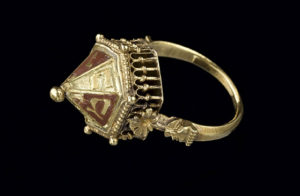Art in NYC: The Colmar Treasure at the Met Cloisters
A Medieval Jewish Legacy, the Colmar Treasure exhibition highlights the tragedy of persecution by featuring the art and jewels hidden away around 1349 by a Jewish family from Colmar in Alsace (France)

The Met Cloisters presents the precious objects of Colmar Treasure from Musee de Cluny in Paris alongside the Judaica from its collection and the private funds. The Cloisters are situated in a picturesque medieval castle surrounded by the lush greenery of Fort Tryon Park, which overlooks the sprawling Hudson River. The exhibition is curated by Barbara Drake Boehm, the Paul and Jill Ruddock Senior Curator, Department of Medieval Art and The Cloisters.
Colmar, a town in the modern-day Alsace region of France, was part of the Holy Roman Empire in the 14-century and traded hands between Germany and France up until World War I. A fast-growing and wealthy wine region, the town was a home for a thriving Jewish community that built a synagogue, a mikveh, and a school there.
The Colmar Treasure was accidentally discovered on Rue de Jiefs in 1863 during the construction of a confectionary shop. First kept in the private hands, in 1923 it was acquired by Musee de Cluny in Paris. While personal and small in its size, the stash of rings, coins, delicate silver belt, and appliqué, and the rest of the decorative objects discovered in Colmar presents a cautionary tale of hope, intolerance, tragedy, and societal betrayal in medieval Europe. The collection serves as a cautionary reminder of the past tragic mistakes driven by intolerance and mistrust.
Visit the exhibition, stroll the Cloisters, and admire the art that celebrates piety, devotion, sacrifice, and mercy. The Colmar Treasure occupies only one small hall of the museum but it tells a profound story. On view from July 22, 2019 – January 12, 2020.
Stay in the know about future events and offers by subscribing to ARTS-NY newsletter Subscribe